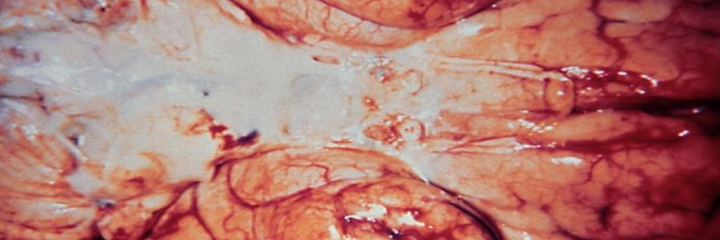Meningitis (plural meningitides) is a nasty condition. From the first post, we already know that meningitis is defined as the inflammation of the meninges. The meninges (singular meninx) are the protective coverings of the brain, and there are three layers, listed outermost to innermost:
- Dura mater (Latin, “hard mother,” since it is the thickest layer)
- Arachnoid mater (Neo-Latin, “spider-like mother,” since it resembles a spider web)
- Pia mater (Latin, “pious mother,” erroneous translation from Arabic umm raqiqah for “tender mother”)
The dura mater is also known as the pachymeninx and the arachnoid mater + pia mater are also known as the leptomeninges.
Pachymeninx
Origin: Greek, pachy (thick) + meninx (membrane)
Thick membrane, i.e., the dura mater
Leptomeninges
Origin: Greek, leptos (thin) + meninges (membranes)
The thin membranes, i.e., the arachnoid mater and the pia mater
Meningitis can be caused by bacteria, viruses, autoimmune phenomena, or trauma. If the inflammation is caused by bacteria, it is said to be (quite logically) a bacterial meningitis, but if it is caused by the latter three, it is said to be an aseptic meningitis.
Aseptic
Origin: Greek, a- (without) + sepein (to cause decay)
Though the other aetiologies “cause decay,” septic is reserved for bacteria in the medical lexicon. It is important to note that the aseptic meningitides, though wretched, do not typically cause mortality. The bacterial meningitides, however, must be identified and treated swiftly, for they have a relatively high mortality. It is for this reason that if a case of bacterial meningitis is suspected, antibiotics are indicated for immediate use, whether or not the patient truly has a bacterial meningitis. Neutrophils in the cerebrospinal fluid (CSF) is a classic diagnostic marker of bacterial meningitis:
There are numerous signs that can hint towards a patient suffering from meningitis, but two of the classic ones are nuchal rigidity (neck stiffness) and photophobia.
Nuchal
Origin: Arabic, nukah (spine)
Used in English as an adjective for the neck
Photophobia
Origin: Greek, photos (light) + phobos (fear) + -ia (condition of)
Condition of the fear of light


